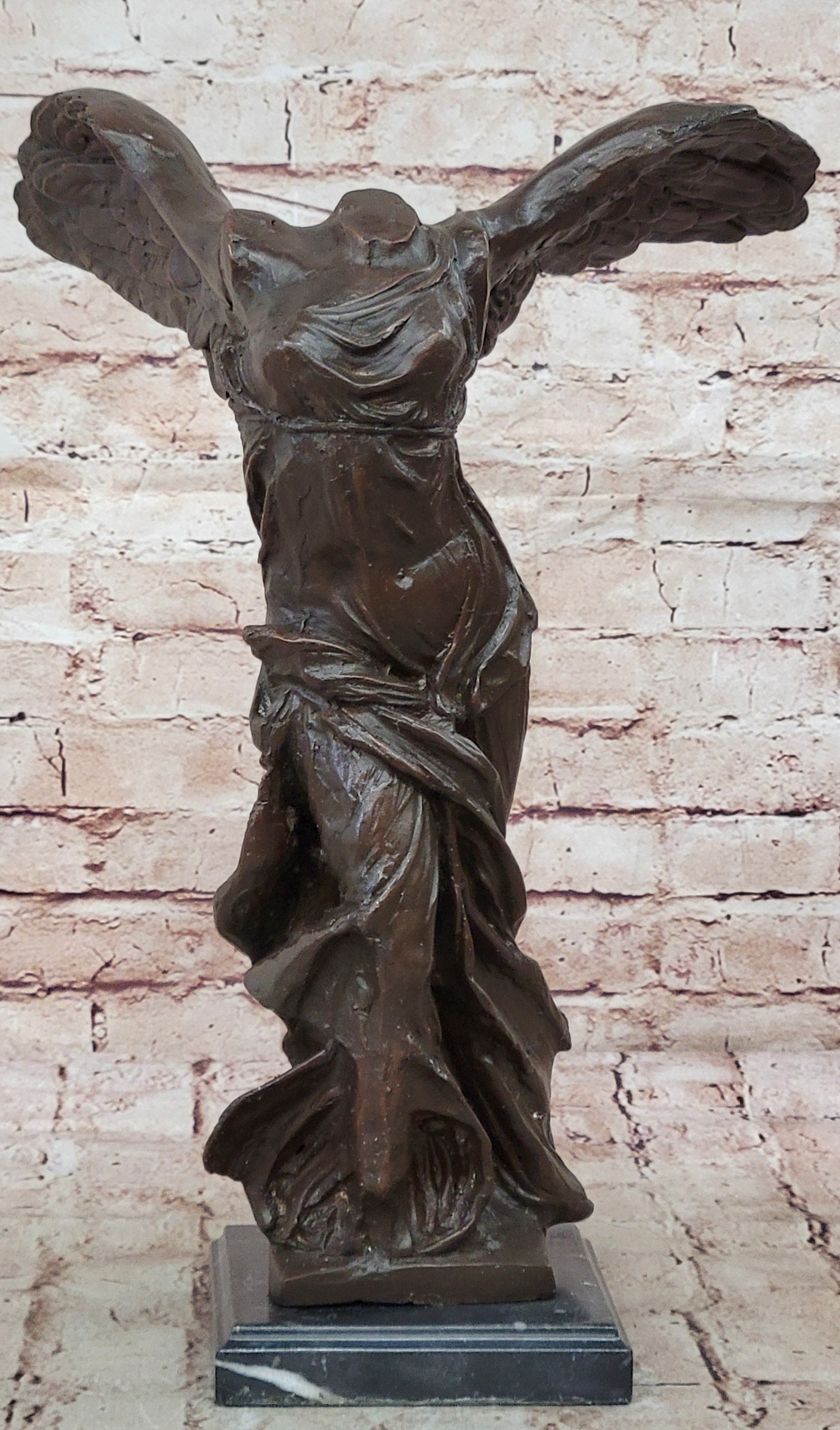Description
Condition: This sculpture is in perfect condition
Bronze Dimensions with Marble Base:
Height 18" X Width 13"
Marble Dimensions:5 1/2" X 5 1/2"
Height without base:17"
Weight:16 LBS
Inventory:27-58506M8672
Since 1884, this iconic artwork has graced the halls of the Louvre, captivating visitors and earning its place among the most celebrated sculptures worldwide. Discovered in 1863, it is estimated to have been created around 190 B.C., serving as both a tribute to the goddess Nike and a commemoration of a momentous sea battle.
The sculpture exudes an aura of action and triumph, capturing the essence of the Greeks' concept of ideal beauty through its meticulously crafted drapery, which gracefully flows and ripples, evoking a sense of movement in the midst of stillness. Originally a part of the Samothrace temple complex dedicated to the Great Gods, Megalon Theon, it stood atop a gray marble rostral pedestal symbolizing the prow of a ship, likely a trihemiolia, symbolizing Nike's descent from the heavens to the triumphant fleet.
While the sculpture's arms, regrettably, have been lost to time and have never been recovered, its original pose showcased Nike's right arm raised, cupped around her mouth, preparing to deliver a triumphant shout of Victory. This work stands out for its masterful representation of the convergence of dynamic motion and sudden stillness, its graceful balance, and the exquisite rendering of the figure's drapery, capturing the essence of a strong sea breeze.
Our exceptional bronze reproduction of this renowned sculpture has been crafted using the revered "Lost Wax Method," ensuring a faithful rendition of the original masterpiece. Adorned with a captivating brown patina, this sculpture exudes elegance and timeless beauty. It bears the signature of the talented artist Rafael, whose mastery breathes life into this remarkable piece of art.
Invite the essence of victory and artistry into your space with this captivating bronze reproduction, a tribute to the enduring legacy of the Nike of Samothrace.






